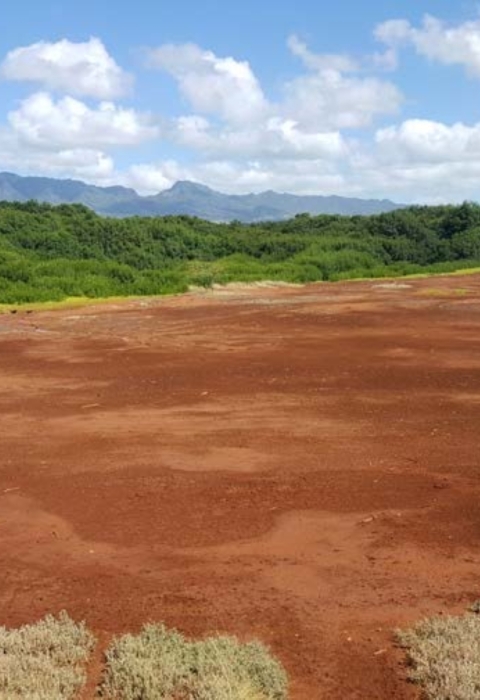HONOLULU — The U.S. Fish and Wildlife Service, the National Oceanic and Atmospheric Administration, the State of Hawaiʻi Department of Health and the Department of Land and Natural Resources are seeking public comments on a draft restoration plan addendum and supplemental environmental assessment that will shift funds to the Pouhala Marsh Enhancement Project. The funding is provided through the remaining settlement balance from the Chevron Pipeline Oil Spill into Waiau Stream and Pearl Harbor on May 14, 1996.
Pouhala Marsh, located adjacent to Pearl Harbor’s west loch, is a 70-acre fish pond and coastal marsh which is the largest remaining wetland in Pearl Harbor. It serves as habitat for native endangered waterbirds, along with several species of migratory shorebirds. The project seeks to restore areas impacted by the Chevron Pipeline oil spill and will provide a predator protected habitat for waterbird nesting and foraging, while recovering wetland habitat, watershed functions, and native plant communities. The project will continue to foster community involvement and stewardship, and provide educational opportunities to community groups, schools and the general public.
The Pouhala Marsh Enhancement Project will take place in two phases over the course of five years.
Phase I will finalize the planning and permitting and fund the construction of an 8-acre restoration pond. The pond will create a waterbird habitat in an area that does not currently function as a wetland or support waterbirds. The design will also allow for greater water retention, which would create the ideal habitat for ʻaeʻo (Hawaiian stilt), ʻalae keʻokeʻo (Hawaiian coot), ‘alae ‘ula (Hawaiian moorhen), and other waterbirds that prefer deeper water.
Phase II seeks to enhance the natural habitat for waterbird inventories and monitoring surveys within Pouhala Marsh. In these areas pickle-weed will need to be maintained in order to provide an optimal habiat for waterbirds. This will require the use of a mechanized, amphibious machine which has been successful at other wildlife sanctuaries in Hawaiʻi. This machine will also allow crews to access parts of Pouhala that have been inaccessible due to environmental conditions and provide access to maintain the newly constructed pond.
The draft restoration plan and supplemental environmental assessment will be available for public comment for 30 days, from June 17 until July 17. An electronic copy of the draft recovery plan is available at our website: Draft Restoration Plan Addendum and Supplement Environmental Assessment for the May 14, 1996, Chevron Pipeline Oil Spill into Waiau Stream and Pearl Harbor
To request additional information or submit written comments, please use one of the following methods.
- You may submit written comments and materials to field supervisor:
- Dan Polhemus, Ph.D.
Pacific Islands Fish and Wildlife Office
300 Ala Moana Blvd. Rm. 3-122
Honolulu, HI 96850
- Dan Polhemus, Ph.D.
- You may send comments by email to dan_polhemus@fws.gov. Please include “Chevron Pearl Harbor Draft Recovery Plan Addendum” in the subject line.
In order to be considered, comments on the draft recovery plan must be received on or before July 17. All comments and materials received will become part of the public record associated with this action. The USFWS will accept comments received or postmarked on or before July 17.
###
The U.S. Fish and Wildlife Service works with others to conserve, protect, and enhance fish, wildlife, plants, and their habitats for the continuing benefit of the American people. For more information, visit www.fws.gov/pacificislands, or connect with us through any of these social media channels at https://www.facebook.com/PacificIslandsFWS, www.flickr.com/photos/usfwspacific/, https://medium.com/usfwspacificislands or www.twitter.com/USFWSPacific.



